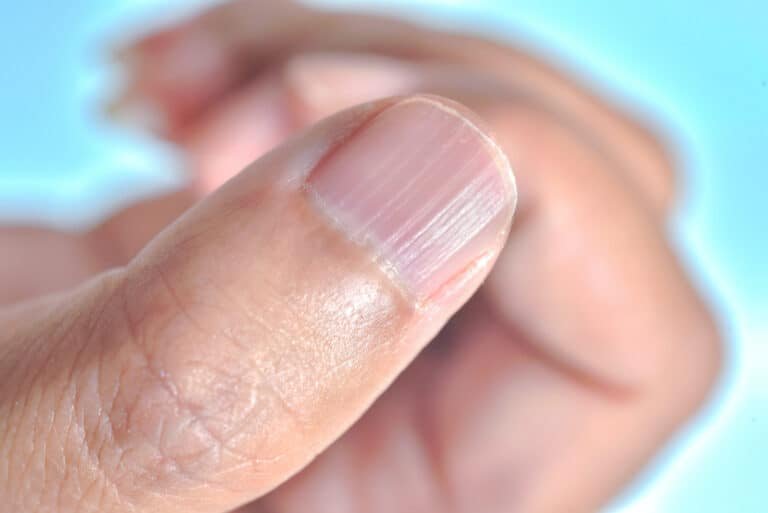What Are Ridges in Nails?
Ridges in nails refer to raised lines or grooves that run across or along the surface of fingernails. These ridges can be longitudinal (running from the base to the tip of the nail) or transverse (running horizontally across the nail). While ridges are common and often harmless, they can sometimes signal underlying health issues.
Types of Nail Ridges
- Longitudinal Ridges on Nails:
- Appear as vertical lines running from the nail bed to the tip.
- Common with aging due to slower cell turnover.
- Horizontal Ridges on Nails (Beau’s Lines):
- Indentations across the nail.
- Often indicate trauma, illness, or nutritional deficiencies.
Causes of Ridges in Nails
1. Aging
Aging is one of the most common causes of longitudinal ridges on nails. As we age, cell turnover slows down, leading to ridged nails.
2. Nutritional Deficiencies
- Iron Deficiency (Anemia): Can cause brittle nails with ridges.
- Vitamin Deficiency: Lack of biotin, zinc, or magnesium may lead to ridged nails.
3. Trauma or Injury
Injury to the nail bed can result in temporary ridges.
4. Underlying Medical Conditions
- Psoriasis: Can cause pitting and ridging.
- Eczema: Leads to brittle and ridged nails due to inflammation.
- Thyroid Disorders: Affect nail growth and structure.
- Arthritis: Longitudinal ridges may be more prominent in those with arthritis.
5. Dehydration
Dehydrated nails often become dry and prone to ridges. Insufficient water intake and excessive use of harsh chemicals can exacerbate this.
6. Fungal Infections
Fungal infections can thicken nails and cause ridging.
Solutions for Ridges in Nails
1. Maintain a Balanced Diet
- Iron-rich Foods: Spinach, red meat, and lentils.
- Biotin Supplements: Promote nail strength.
- Omega-3 Fatty Acids: Found in fish, walnuts, and flaxseeds to maintain nail health.
2. Hydration
Drink adequate water daily to keep nails hydrated. Apply moisturizers or cuticle oils to prevent dryness.
3. Gentle Nail Care
- Avoid harsh nail tools or over-buffing.
- Use a gentle nail file to smooth ridges.
4. Protect Your Nails
- Wear gloves while doing household chores.
- Avoid prolonged exposure to water or harsh chemicals.
5. Medical Treatments
- Consult a dermatologist for persistent ridged nails.
- Treat underlying conditions like eczema or fungal infections.
Preventing Ridges in Fingernails
- Regular manicures using gentle products can help maintain nail health. Learn more about manicures in our French Manicure Guide.
- Use nail strengthening treatments. Visit Best Nail Care Tips for more advice.
Common Myths About Ridged Nails
- Myth 1: All ridged nails indicate a serious health issue.
- Truth: Aging and mild dehydration are common causes.
- Myth 2: Buffing eliminates ridges permanently.
- Truth: Buffing smooths the nail temporarily but doesn’t address the cause.
When to Seek Professional Help
If ridges are accompanied by discoloration, pain, or changes in nail thickness, consult a doctor. Persistent issues could indicate systemic health concerns.
For additional nail care insights, check out 7 Different Types of Nail Extensions to keep your nails looking their best.
Related Resources
- The Best Nail Salons in Gurgaon
- Nail Extensions and Nail Art
- How to Do a French Manicure: Step-by-Step Tutorial
By understanding ridges in nails and implementing these solutions, you can maintain healthy and beautiful nails. For more tips, explore our Nail Care Category.








